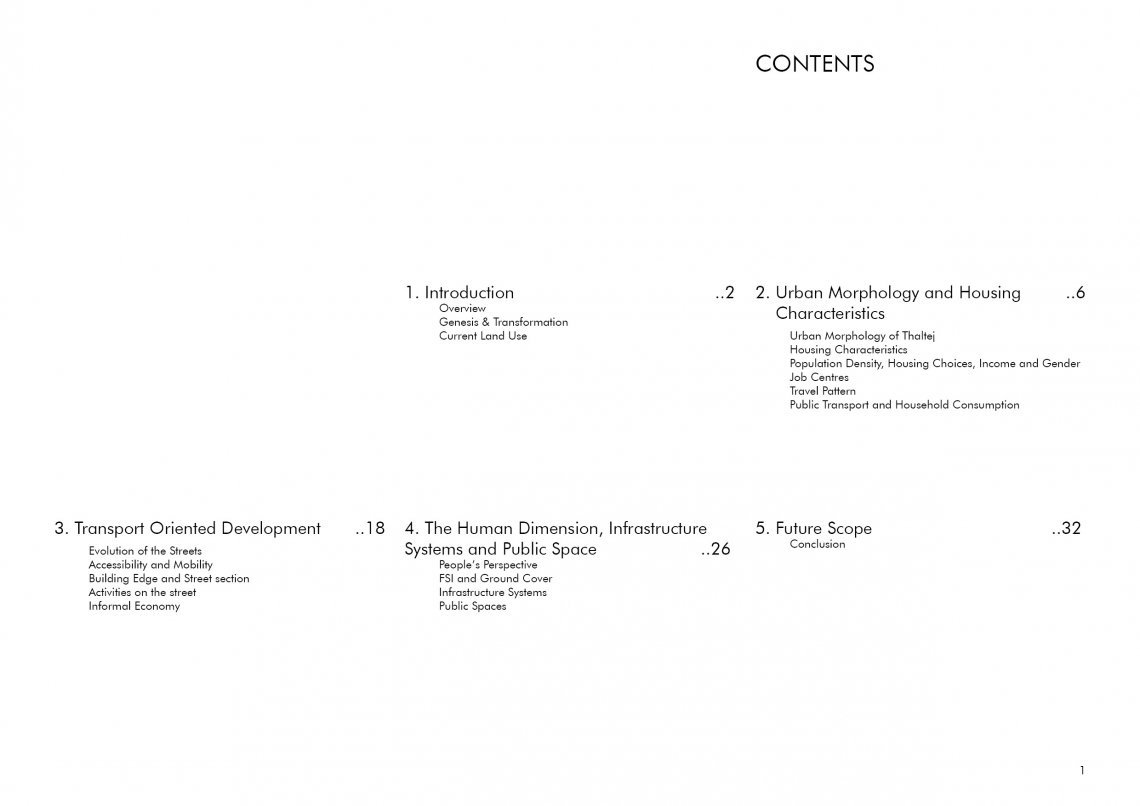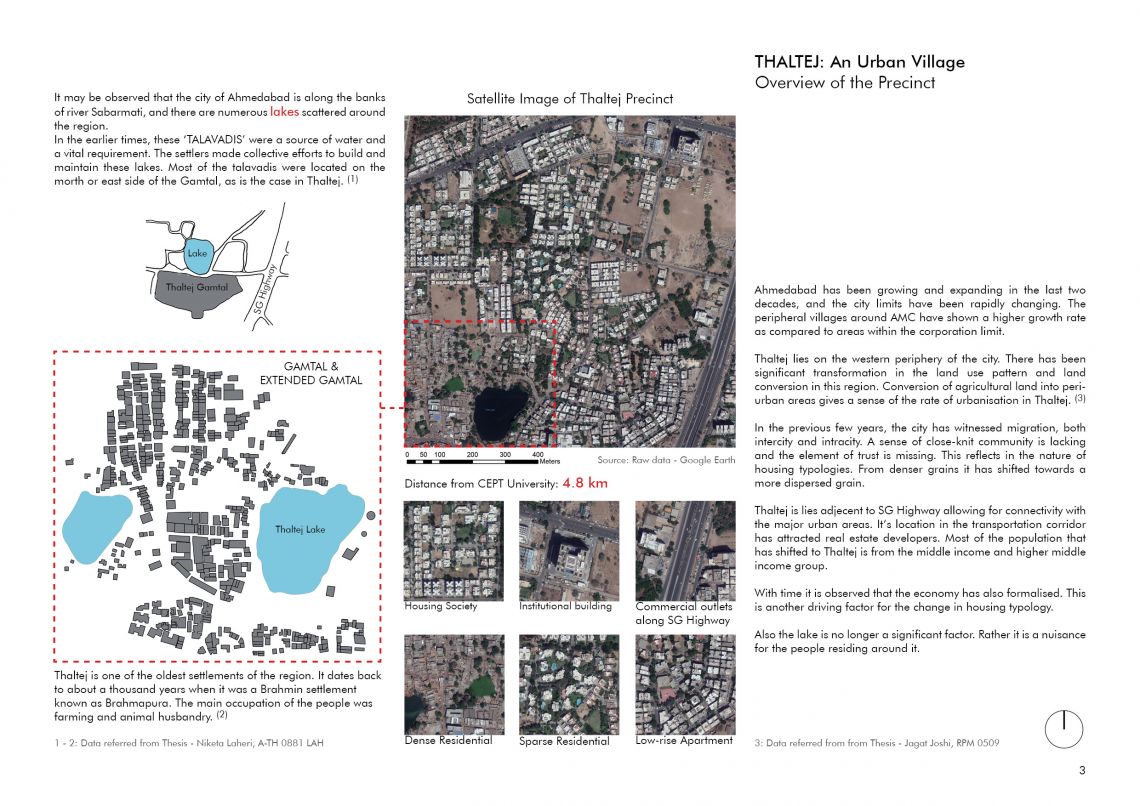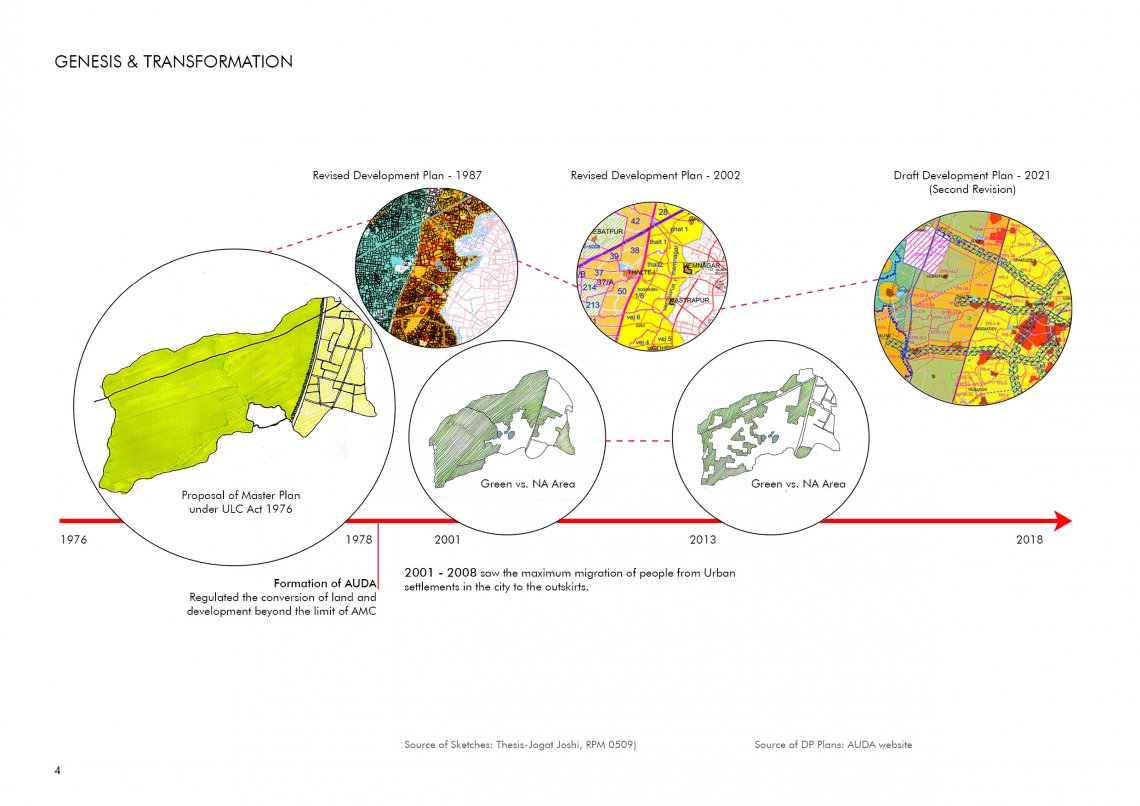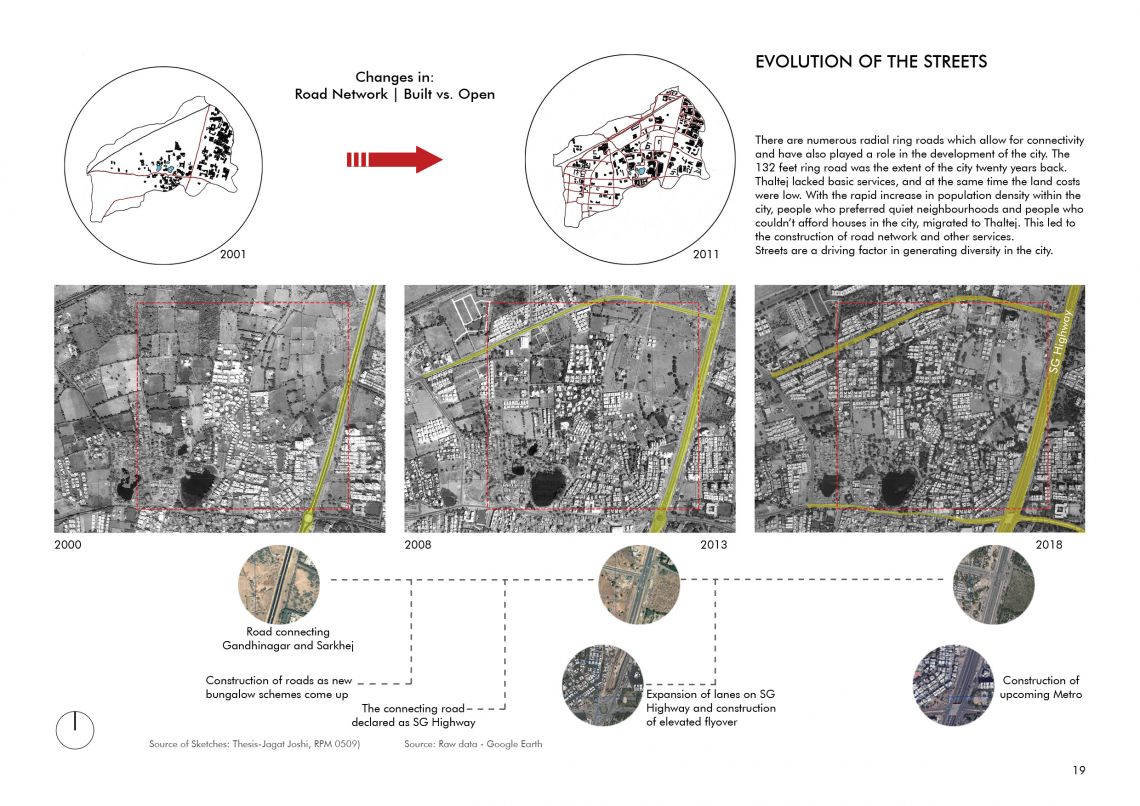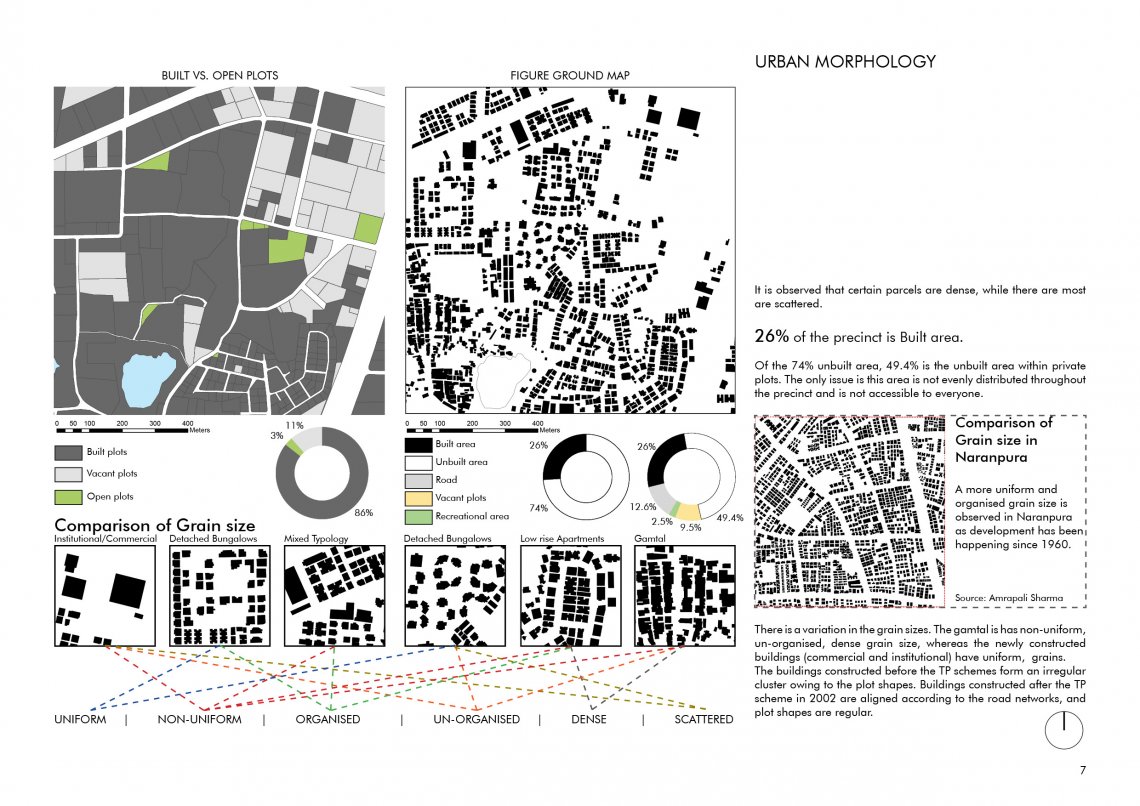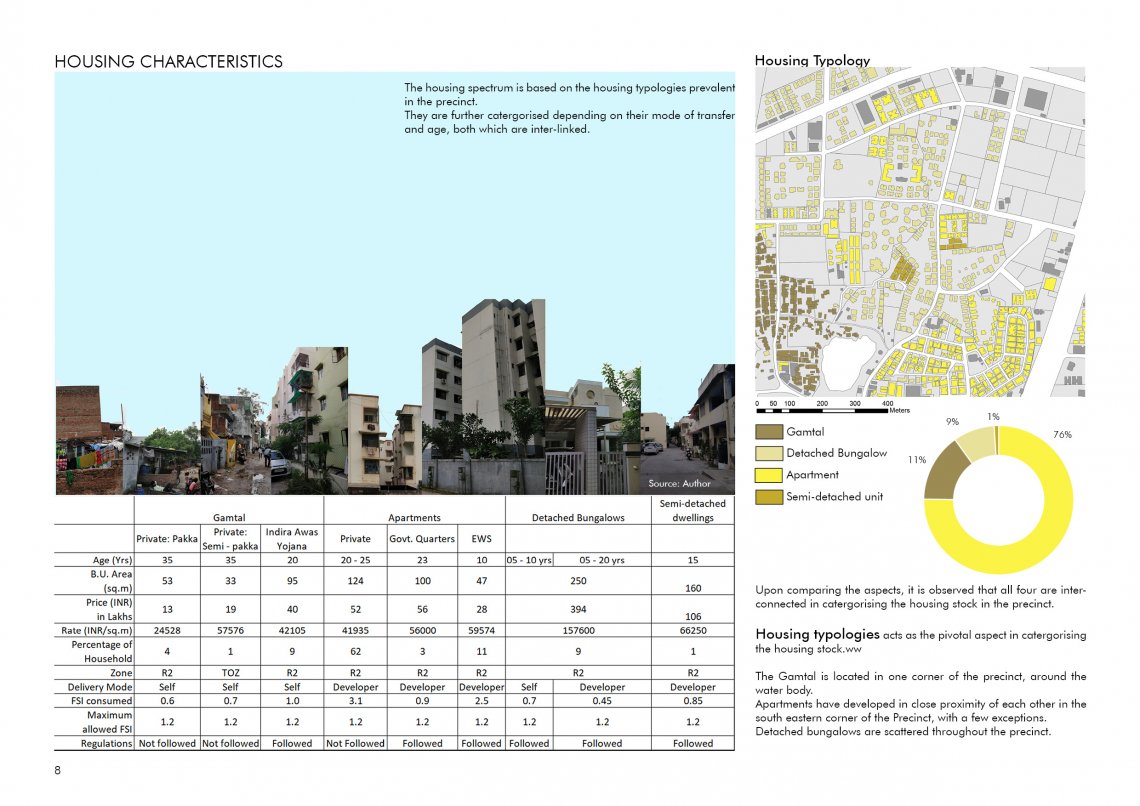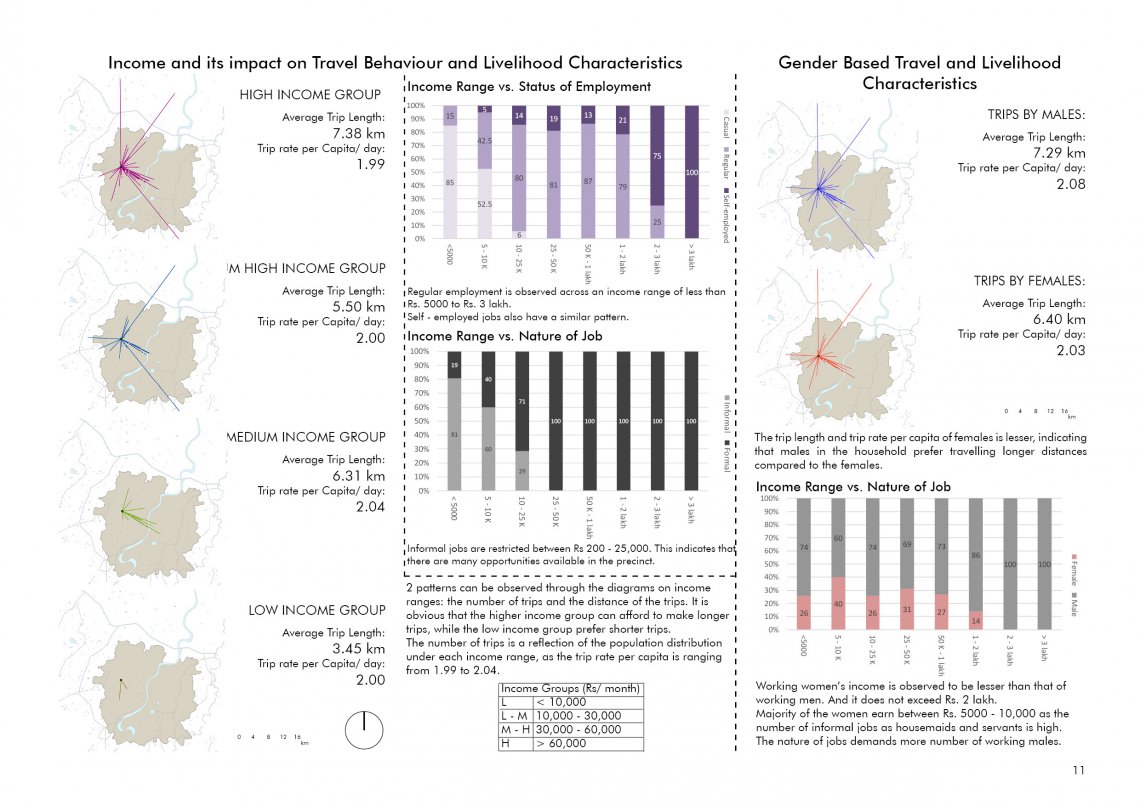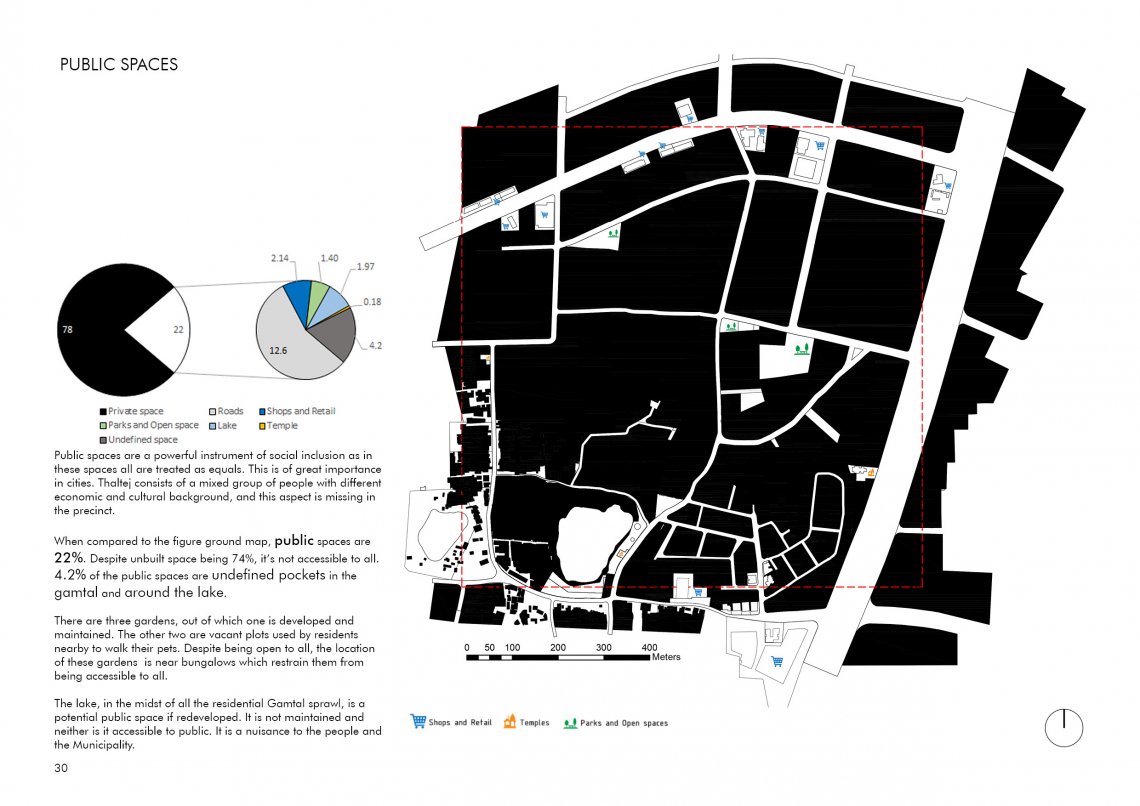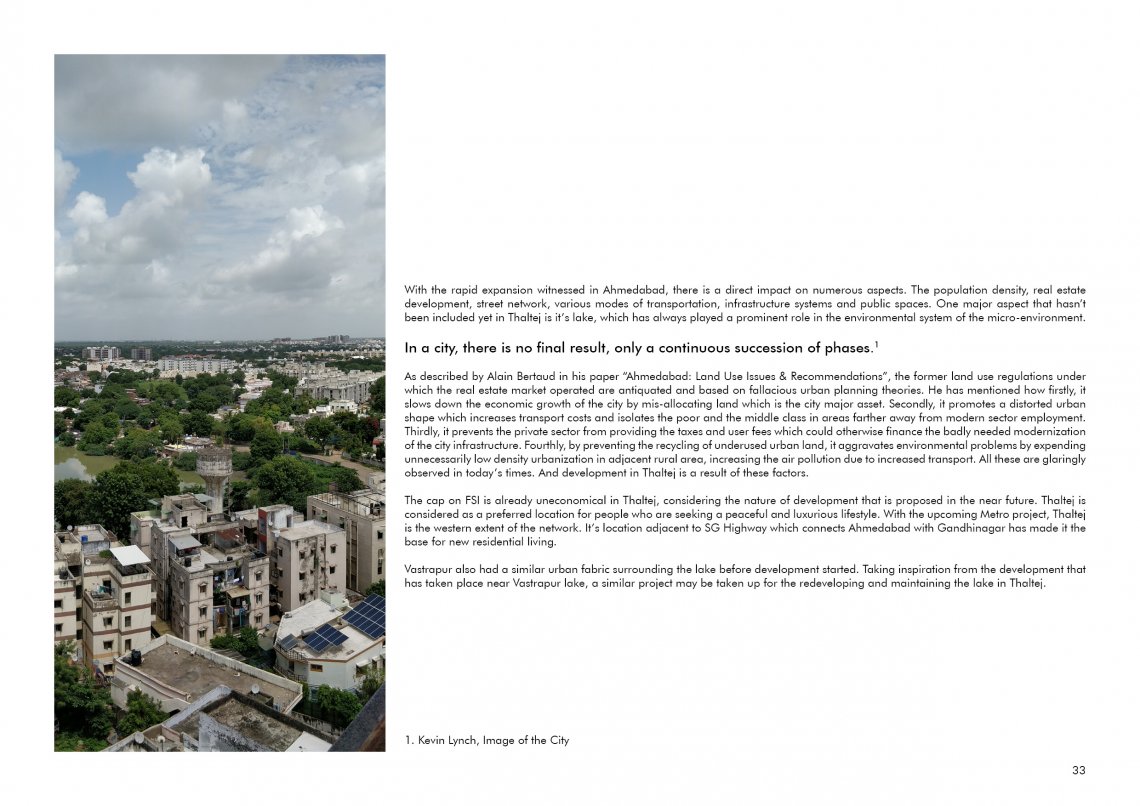Your browser is out-of-date!
For a richer surfing experience on our website, please update your browser. Update my browser now!
For a richer surfing experience on our website, please update your browser. Update my browser now!
Ahmedabad is the first Indian UNESCO World Heritage City with a history from the 11th century. It is has been an important industrial centre in India. Currently the city neither monocentric nor polycentric, but in a continuum. Through this studio, we are studying the city based on multiple aspects which have impacted and resulted in the current condition of Ahmedabad. The focus is on a square kilometer Precinct and relating it to the rest of the city. In this portfolio, we are analysing these aspects through a wider lens and weaving together the prominent factors. The Precinct being studied is in Thaltej. One of the oldest Gamtals in Ahmedabad, it is now a preferred location for the High-income community. Owing to its location on the outskirts of Ahmedabad, there are two predominant factors which have played a vital role in its development: the Urban morphology and the Transport Corridor. Both these factors have parallelly impacted the transformation in Thaltej. And in the current scenario, both these factors combined have escalated the migration in the last twenty years. The Urban morphology and Housing Characteristics impact numerous factors like the population density, the income characteristics, and job and travel patterns. It also reflects the consumption pattern in the precinct. The streets play multiple roles here. They are the network which connect Thaltej with other places. They act as dividers (SG Highway), distinguishing Zone 1 from Zone 2. They are utilised for various activities which generate opportunities for the informal economy. As we get a sense of the built space and networks in the Precinct, we look at the living component: the People. Ultimately, the city is planned with a futuristic context. Keeping in mind the present-day scenario, public amenities and infrastructure are analysed. Clearly, Thaltej has immense scope for development.
